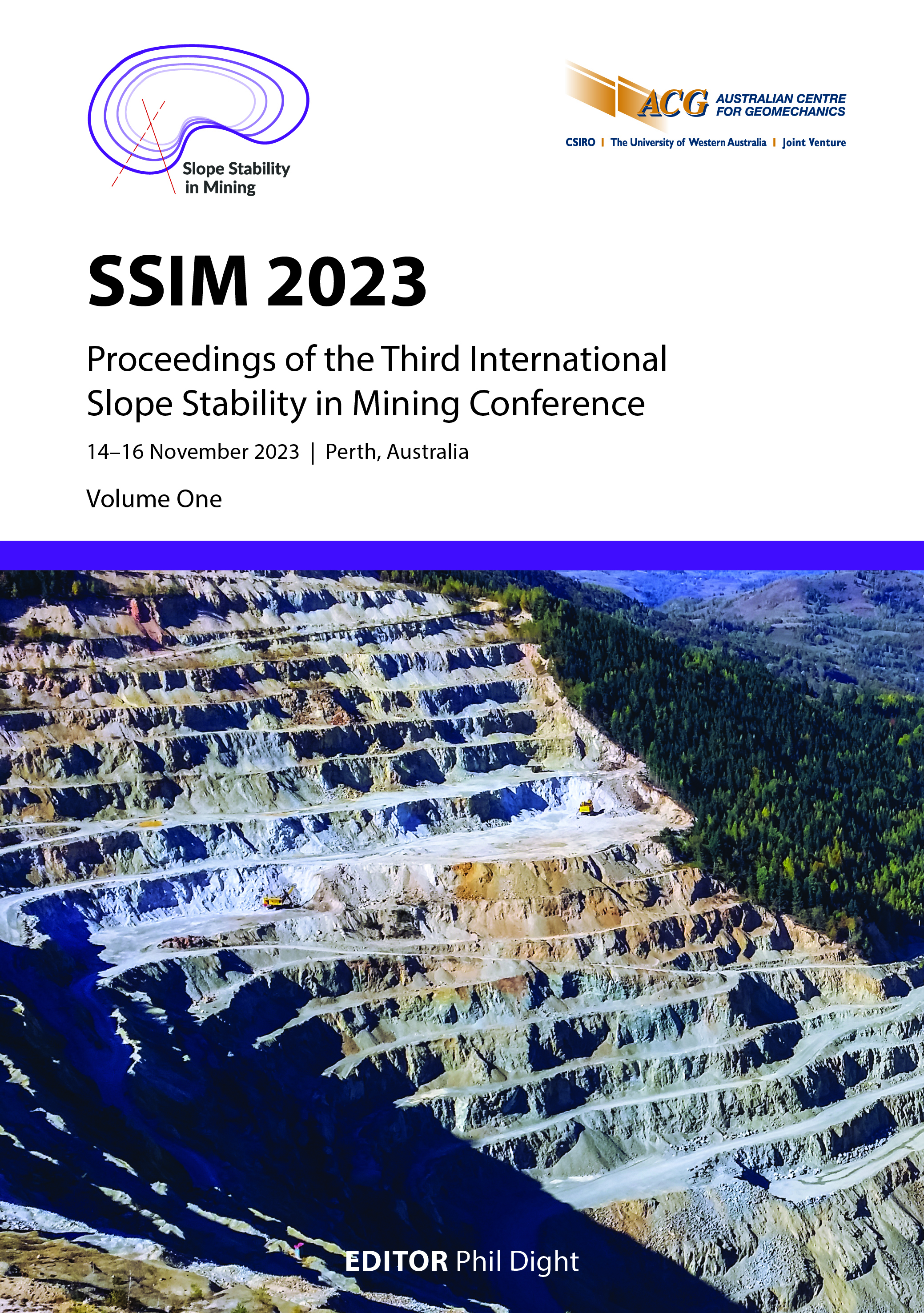Mine slope design and the role of confidence and consequence

|
Authors: Jones, EK; Player, J; Sweby, G |
DOI https://doi.org/10.36487/ACG_repo/2335_12
Cite As:
Jones, EK, Player, J & Sweby, G 2023, 'Mine slope design and the role of confidence and consequence', in PM Dight (ed.), SSIM 2023: Third International Slope Stability in Mining Conference, Australian Centre for Geomechanics, Perth, pp. 231-242, https://doi.org/10.36487/ACG_repo/2335_12
Abstract:
Geotechnical model confidence and consequence of failure are the two critical aspects when selecting appropriate stability design criteria. Geotechnical model confidence needs to be appropriate for the project, considering the scale of the pit, the geological setting and the study level. Consequence is express solely in its importance to the business. This paper proposes an approach to help navigate how to apply which level of confidence and consequence to slope stability design when considering the geology, geotechnical and hydrogeology models, and how to apply this confidence to select the appropriate batter/berm design criteria. When selecting the overall stability acceptance criteria both the model confidence and failure of consequence are utilised. Consequences for studies revolve around business loss (cessation of production), loss of licence to operate and the impacts of such to the operation. This approach expands on the study guidelines and stability criteria as presented in Read & Stacey (2009) to allow for smaller pits or those that don’t have a high consequence when it comes to instability occurrence.
Keywords: slope design, geotechnical confidence, failure consequence
References:
AGSW 2023, AGSW software, version v2307, computer software, https://absolutegeotech.com/?page_id=713
Australian Institute of Mining and Metallurgy 2012, The JORC Code 2012 Edition, Joint Ore Reserves Committee of The Australian Institute of Mining and Metallurgy, Australian Institute of Geoscientists and Minerals Council of Australia.
Canadian Institute of Mining, Metallurgy and Petroleum 2011, NI 43-101 Standards of Disclosure for Mineral Projects, from 43-101F1 Technical Report and Related Consequential Amendments,
Fillion, M & Hadjigeorgiou, J 2018, ‘Quantifying influence of drilling additional boreholes on quality of geological model’, Canadian Geotechnical Journal, vol. 56, no. 3, pp. 347–363
Hoek, E & Carter, TG & Diederichs, MS 2013, ‘Quantification of the geological strength index chart’, 47th US Rock Mechanics/Geomechanics Symposium, 23–26 June 2013, San Francisco.
International Society of Rock Mechanics 1975, ISRM Recommendations on Site Investigation Techniques – 1975,
/page/show/138?tab=1020
Read J & Stacey, P 2009, Guidelines for open pit slope design, CSIRO Publishing, Melbourne.
SAMREC 2016, The South African Code for the Reporting of Exploration Results, Mineral Resources and Mineral Reserves,
Thomas, RDH 2021, ‘Visualising bias of structural orientation data’, in PM Dight (ed.), SSIM 2021: Second International Slope Stability in Mining, Australian Centre for Geomechanics, Perth, pp. 11–26,
Varden, RP & Player, JR & Player, NM & Jones, E 2016, ‘Justifying slope design risk and costs’, Proceedings of the Ninth AusIMM Open Pit Operators’ Conference 2016, Australasian Institute of Mining and Metallurgy, Melbourne, pp. 185–201.
© Copyright 2025, Australian Centre for Geomechanics (ACG), The University of Western Australia. All rights reserved.
View copyright/legal information
Please direct any queries or error reports to repository-acg@uwa.edu.au
View copyright/legal information
Please direct any queries or error reports to repository-acg@uwa.edu.au

